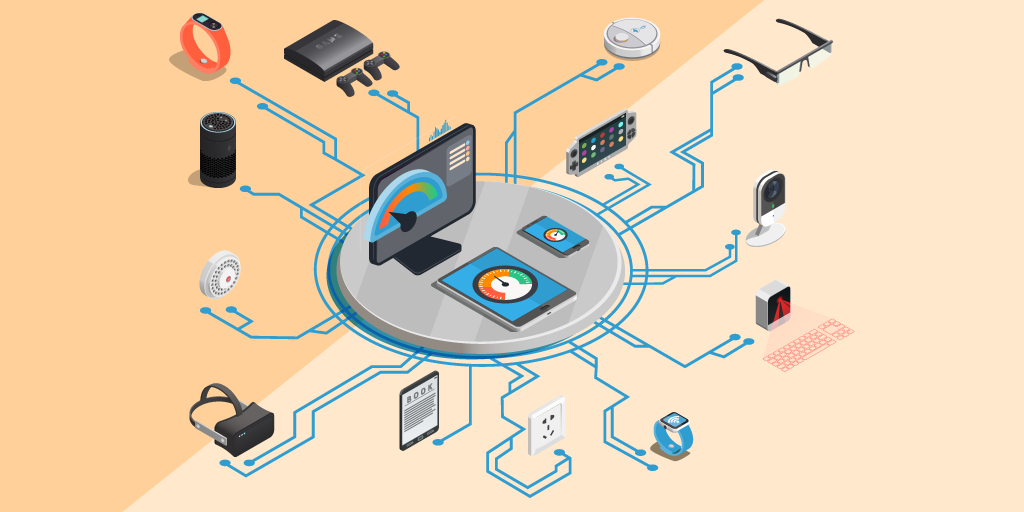
Network Service Providers (NSPs) are under intense pressure to deliver optimal performance and bandwidth to customers in an increasingly competitive industry. Why? Because customers remember when service is down, or connections are slow, and they’re quick to change providers. However, with the number of connected devices per household rising, effective network management essential to optimizing performance and bandwidth is no easy feat.
According to research from Parks Intelligence, the average household now has 16 connected devices, ranging from desktop computers to laptops and tablets, smartphones, wearables, IoT devices, and intelligent appliances. That’s a lot to keep track of – both for the consumer and the network provider. Plus, with so many devices accessing network resources at once, network congestion is likely, especially during “rush hour” times, when multiple people are in the house accessing the internet on different devices simultaneously.
Network congestion has become a severe problem of the pandemic era, where hybrid work models are increasingly common. Employees accessing corporate resources remotely rely on secure, highly available services, even when other family members are home and using their devices for homework, gaming, web-surfing, entertainment, and other activities. What’s more, older, outdated devices can compound the issue, slowing network performance further and opening up vulnerabilities that could put the network’s security at risk.
Complete visibility across all connected devices is essential to optimizing network performance and security. However, many providers lack such insight. They have a limited understanding of what devices are on the network, what their capabilities are, and how often they’re used. This turns decisions about network planning and enhancements into a guessing game, making it challenging to meet consumer expectations. Should a network outage or performance issue occur, troubleshooting the problem is slow and ineffective, resulting in a bad customer experience.
Visibility Drives Better Business Decisions
Efficient network management and optimization hinges on gaining visibility into how the network is used and what devices end customers use to access it. However, legacy network management tools often lack device recognition capabilities. They provide little insight other than a MAC address and device type and nothing about the manufacturer, model, or operating system. What’s more, many require credentials to scan devices, which are typically unavailable for in-home personal IoT devices. Legacy solutions usually don’t offer any insight to end customers either, so if a network issue occurs, there’s no way for them to find out why or troubleshoot the problem, for example, disconnect a device or two to free up bandwidth.
That’s where Lansweeper’s embedded device recognition technology comes into play. Lansweeper employs machine-learning techniques and big data to detect all connected devices—even non-scannable devices and those that only briefly connect to the network—without the need for credentials, providing a complete and accurate inventory of all connected devices—from routers and gateways to desktops, laptops, tablets, and IoT devices.
But it doesn’t stop there. Lansweeper CDR enriches discovered asset data to provide accurate information about the asset type, model, manufacturer, and operating system. A fingerprint for each device is then generated, encrypted, and stored. That information can be easily accessed for analysis to help NSPs optimize network performance and make better decisions about network and service planning.
Optimize the Network and Gain Competitive Advantage
By integrating with Lansweeper, NSPs not only improve network performance but also differentiate themselves from competing providers. The device data collected by Lansweeper can also be visualized for end customers and displayed via interactive dashboards, allowing them greater control over their own network usage and performance and providing insight into any network issues to assist with troubleshooting.
By embedding Lansweeper’s CDR technology into their product offerings, NSPs can:
- Identify opportunities for network optimization, such as allocating traffic for streaming during peak hours to guarantee performance SLAs.
- Detect and address potential vulnerabilities in connected devices – such as outdated OSes – or push security updates to improve security.
- Detect and isolate rogue devices that sign on with potentially malicious intent.
- Provide end consumers insight into their networks for self-service performance enhancements and troubleshooting.
According to Lansweeper partner Checkpoint, Lansweeper has helped them mitigate customer security risks while providing a competitive advantage. “Lansweeper is fast and simple to integrate into our products, and it doesn’t require extensive expertise,” he said. “The solution provides immediate insight, organized on an intuitive dashboard that makes taking action to address vulnerabilities and other issues much easier.”
Take Back Control – and Empower Customers with Data
With IoT devices proliferating both in the workplace and at home, network complexity will continue to increase, making it even more essential for NSPs to implement effective oversight and management technologies. That includes device recognition and identification capabilities for keeping tabs on customers’ ever-expanding inventory of internet-connected devices. Embedding Lansweeper CDR into your products is the first step toward taking back control and empowering your customers with accurate device data and actionable insights.
Innovate, Scale, and Get to Market Faster
Accelerate your go-to-market by leveraging our embedded technologies.
OEM Products